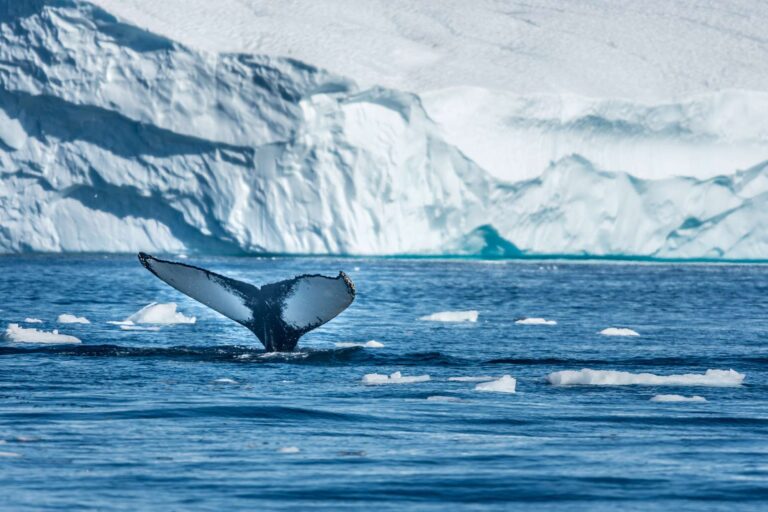Speak to a specialist
Enquire now
Best Time to Visit Greenland
Over 80% of Greenland is locked under a perpetual ice sheet. It’s only the coastal fringes that escape the deep-freeze. During summer, from June through August, the snow melts and sea ice retreats from the fjords – a perfect time for hiking Greenland’s spectacular wilderness, exploring Viking ruins and cruising iceberg-filled bays.
When to visit Greenland… at a glance

Spring
- Days begin to lengthen, but still chance of northern lights
- Many fjords still blocked with ice
- Birds arrive to nest in huge numbers
- The ideal time for husky sledding

Summer
- Long days with midnight sun above Arctic Circle
- Tundra in flower; peaks breeding season for birds
- Hiking, boat trips and expedition cruises possible
- Peak time; book early

Autumn
- Autumn colours on tundra
- Birds migrate south as days close in
- Less busy, but still plenty to do
- Chance of early northern lights sighting

Winter
- Fjords freeze and access restricted to snowmobiles/husky sleds
- Long nights with great northern lights potential
Greenland in Spring
The Arctic spring in Greenland is a time of great expectancy. After the long, hard winter, the days begin to lengthen, snow melts around the coast, wildflowers begin to put on a spurt of growth, while some 60 species of birds are seized by the urge to nest. March and April are transition months – there may well be enough lying snow for dog-sledding in places like Kulusuk and Tasiilaq. Many fjords may still be choked with ice, while nights can be lit up by the aurora borealis.

Greenland in Summer
By May, daytime temperatures are usually above freezing; the spring thaw is well underway and the days are long and often sunny. By the end of the month, all the way through August (and often for a large part of September) you can experience an Arctic summer with balmy daytime highs of around 10ºC – or even as high as 20ºC in South Greenland.
June is the month to witness the midnight sun – especially in settlements like Illulissat, just north of the Arctic Circle – but you can still expect around 20 hours of daylight in August. The peak summer months of June, July and August are prime months for enjoying the tundra in flower, watching humpback whales feeding in the fjords and observing Arctic foxes and seabird colonies. The long days are ideal for hiking in the mountains, taking a boat trip through iceberg strewn fjords or an expedition cruise along the coast. The longest day, 21 June, coincides with Greenland’s National Day and is celebrated with music and dancing.

Greenland in Autumn
There’s a reason for the frenzied summer bird breeding season in Greenland, and the rapid flowering season of wildflowers like gentians and Arctic poppies: summer can end abruptly, with a brief autumn spanning late September and October. Don’t overlook this time for travel. The tundra turns a burnished gold at this time of year, while the northern lights start appearing in the rapidly darkening night skies. There are less tourists compared to summer, prices are lower, but there’s still plenty to do.

Greenland in Winter
From October through February, Greenland is gripped by winter. Temperatures plummet, daylight dwindles and the fjords freeze over. Hardy travellers may be rewarded by stunning displays of the aurora borealis and perhaps a glimpse of wildlife like muskox and reindeer – but be warned that access may be extremely difficult and, once you’re there, you’ll be largely limited to dog sled and snowmobile for getting around.

Greenland Weather
Summer daytime temperatures in Illulissat range from around 5-10°C, although southern fjords can experience highs of over 20°C. Temperatures return to below freezing in late September or early October. By February, Illulissat struggles to get above -18°C. The further north you go, the more extreme the climate. Low humidity creates crystal-clear days during summer when superb visibility can bring the mountains and fjords into sharp relief. Precipitation occurs mainly as snow, which can be quite heavy along the coast during autumn and winter. As with any Arctic destination, you should come prepared for changeable weather whatever time of ear you visit.








 Instagram
Instagram
 Facebook
Facebook
 YouTube
YouTube